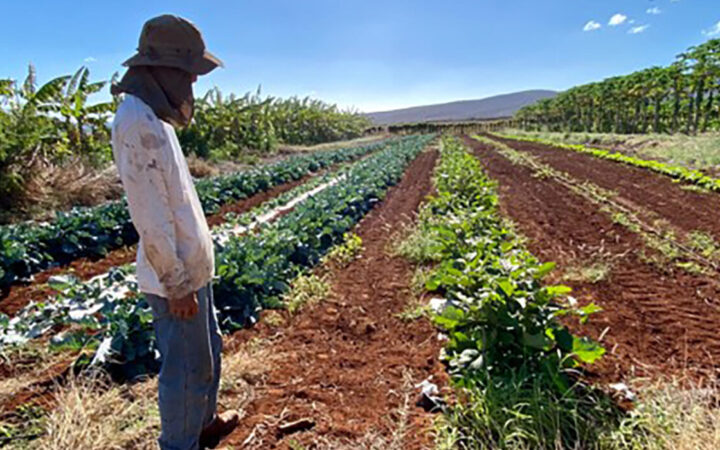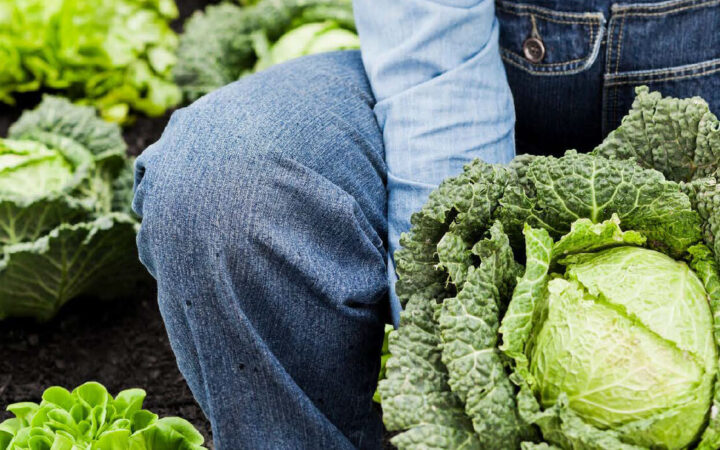Throughout the US, state and local governments have established local food purchasing targets for food served in public institutions like schools, hospitals, or prisons. This guide offers public sector procurement teams options and strategies to adjust their contracting processes with food distributors to support these policy aims.
Webinar Recording: Contracting Solutions for Increasing Local Food Purchasing
September 16, 2025
In this webinar, CAFS research affiliate Amanda Karls and Deputy Director and Senior Researcher Lihlani Nelson walk through some of the details of this guide. Hear firsthand insights, including challenges and lessons learned from the field, from Brittany Peats of the Maine Department of Agriculture, Conservation & Forestry.
Introduction
Across the United States, state and local governments have implemented values-aligned food procurement policies to promote access to nutritious food while boosting local economies. One approach has been to establish purchasing targets for state, regional, or other proximally sourced food (collectively known as “local food”). These purchasing targets are as aspirational goals or specific mandatory quotas set through the legislative process or by executive order. They typically apply to food served in public institutions—such as schools, government-run hospitals, and carceral facilities—or food purchases for other publicly operated or funded settings. This resource includes several state-level policy examples that establish targets for local food (see “Example State Policies that Establish Targets for Local Food Procurement” in the Appendix of this guide).
The economic impact of purchasing targets can be substantial and result in potential benefits beyond the institutions that purchase and serve food.
Local food procurement supports local farmers and businesses—creating jobs, stimulating the local economy, and reducing dependency on external markets or imports.
Sourcing food locally also reduces the carbon footprint associated with transportation and storage and encourages the consumption of seasonal produce, which can lead to a more balanced and nutritious diet. Moreover, local food procurement can foster a sense of community by connecting consumers with local producers.
Yet, even where local food procurement targets are set or even mandated by law, procurement officials and purchasing staff encounter challenges, including enforcement limitations, cost constraints, logistical distribution challenges, seasonal variability of local produce, insufficient source tracking and labeling of local products, equipment limitations, inadequate staff training on fresh food handling, and aligning supplier procurement practices with institutional needs, among other issues.
Legislators, agencies, and government executives may consider several policy options to meet local food procurement targets and other local food sourcing efforts, including financial incentive strategies such as matching funding for public sector entities (PSEs) that source locally. In addition, PSEs can also adjust their internal contracting processes to support those public policy aims, including at the vendor solicitation and contract negotiation stages. This guide explores some of those options for PSE contracts with food distributors (see definition in the Glossary). Some of the options covered below may also be relevant for other types of food vendor contracts, including contracts with food service management companies (FSMCs). Though much has already been written elsewhere about FSMC contracting, the distinction is important because food distributor relationships can be more flexible than many FSMC business models allow.
Overview
To explore some of the ways public sector entities (PSEs) might optimize their contracting processes with food distributors to increase local food procurement, this guide does the following:
- Contextualizes how food distributor contracts fit within the landscape of other supplier options—including contracting with FSMCs and individual suppliers;
- Outlines how PSEs can prepare for the bid solicitation process to optimize solicitation documents and contracts;
- Highlights approaches for solicitation, bid selection, and contract drafting that align food distributor solicitation documents and contracts with local food procurement targets; and
- Provides guidance for PSEs to consider options for monitoring and assessment to include local food sourcing in contract terms.
This guide also includes an Appendix with supplementary information, including:
- Additional resources, such as guides, toolkits, and reports, that provide more information for procurement teams focused on local food procurement targets;
- Examples of states with local food procurement targets set by state statute or executive order;
- A hypothetical contract review scenario that demonstrates how, with the support of legal counsel, procurement teams may explore flexibilities and limitations in food distributor contracts; and
- Sample and draft solicitation and contracting language that emphasizes local food sourcing.
Acknowledgments
This resource was developed on behalf of the Healthy Food Policy Project (HFPP). Amanda Karls JD, was the primary researcher and author, and Lihlani Nelson, Deputy Director and Senior Researcher at the Center for Agriculture and Food Systems (CAFS), served as lead editor, with additional review from the CAFS team by Laurie Beyranevand, Director, and Austin Price, Communications Manager.
We also thank Brittany Peats, Institutional Market Development Coordinator for the Maine Department of Agriculture, Conservation and Forestry for her support in developing and editing this resource and for providing numerous contract and solicitation document examples. Additional review was provided by Sarah Blau MPH, Public Health Promotion Specialist, Division of Community, Health and Equity, Rhode Island Department of Health, whose suggestions and feedback were invaluable.
This guide is not intended as a substitute for legal advice and is not intended to advocate for any specific legislative or other policy approach in any given state or locality. Furthermore, this guide is not an exhaustive compendium of all possible approaches for optimizing contracting processes with food distributors to support local food purchasing targets. It is informed by our review of various contracts, bidding solicitation documents, reports, toolkits, and other literature related to this topic. We also incorporated insights shared by our network regarding the challenges of achieving local food purchasing targets. However, our review was limited by the project scope, including the parameters of HFPP’s 2024 Consultation and Resource Development Lab.
Suggested Citation
Vt. L. & Grad. Sch. Ctr. for Agric. and Food Sys., Optimizing Food Distributor Contracts to Achieve Local Food Procurement Targets: Considerations for State and Local Public Sector Entities (2025), https://cafs.vermontlaw.edu/resource-library/optimizing-food-distributor-contracts-to-achieve-local-food-procurement-targets.



